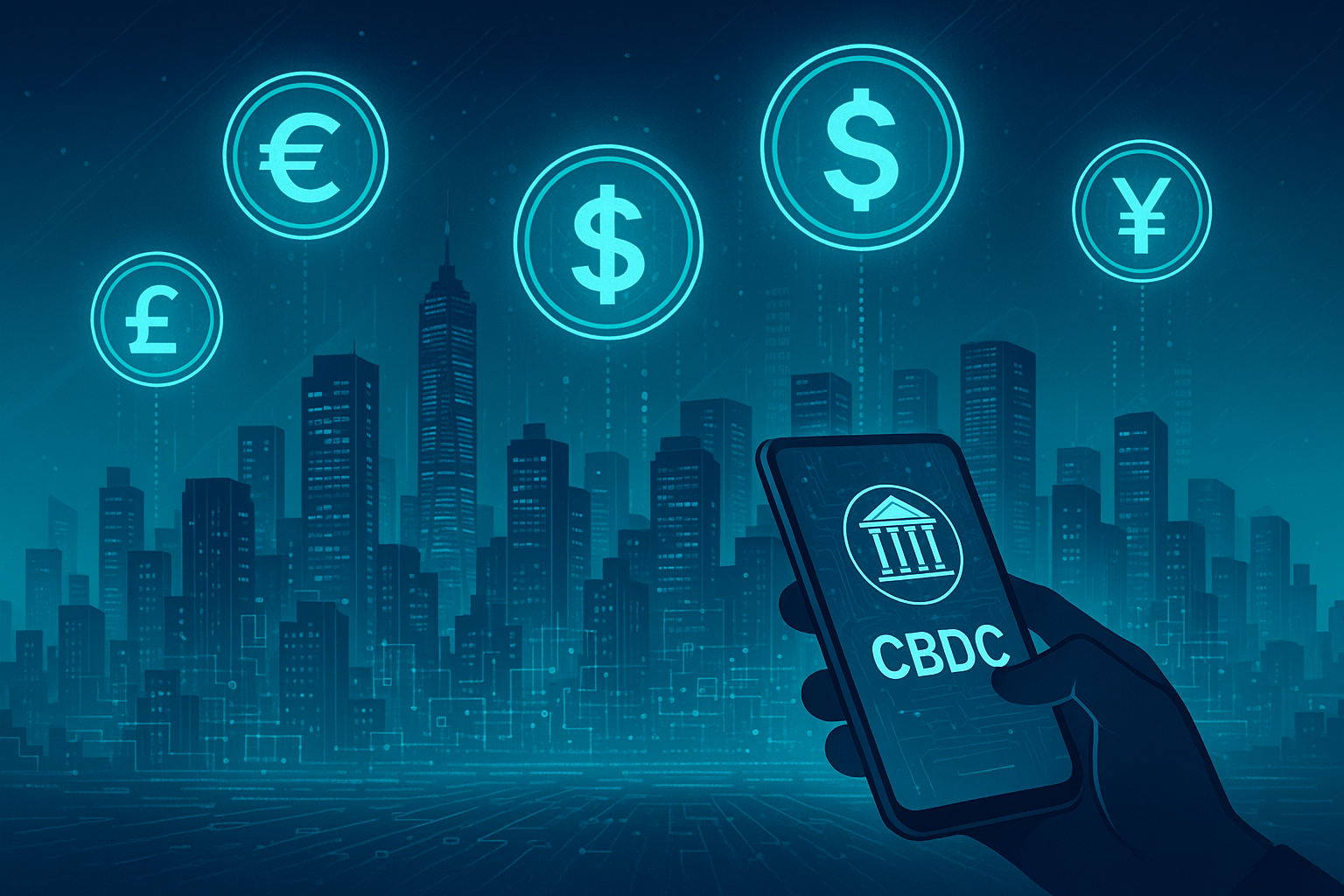Introduction: A New Type of Cash
Think about using digital money that works just like cash—but on your smartphone. That’s what CBDCs (Central Bank Digital Currencies) are all about. They’re official digital currencies that a country’s central bank creates and manages. Instead of paper notes or metal coins, you use safe digital versions to buy things every day.
Why Nations Are Shifting to Digital Cash
Governments worldwide are looking into CBDCs to stay current with the evolving financial scene. Here’s why they’re getting noticed:
- Faster Payments: CBDCs allow money to move almost .
- More People Included: Folks without bank accounts could use CBDCs with just a phone.
- Lower Costs: Digital money costs less to handle than printing cash.
- Better Security: CBDCs help spot illegal deals and cut down on fraud.
How Do CBDCs Work?
CBDCs exist in digital wallets, like the apps you already use to pay bills or buy stuff online. But the government runs it, not a private company. The central bank keeps a safe record each time you spend or get money—making sure everything stays secure and easy to track.
CBDCs vs. Cryptocurrencies: How Do They Differ?
CBDCs and cryptocurrencies are both digital, but they have distinct characteristics:
- Governments back and recognize CBDCs as legal tender.
- No one has control over cryptocurrencies, as they operate in a decentralized manner.
- CBDCs maintain stability, while crypto values often fluctuate .
- People use CBDCs to pay for everyday items, not to trade or speculate like many do with crypto.
Which Countries Lead the Pack?
A number of nations have taken the lead in the CBDC race:
- China: The digital yuan (e-CNY) undergoes testing in numerous cities.
- Bahamas: They introduced the Sand Dollar, the first official CBDC.
- Europe: The European Central Bank examines a digital euro.
- India & Nigeria: Both nations run early versions of their digital currency.
Pros and Cons of CBDCs
The Good:
- Fast and simple payments 24/7 everywhere
- Improved money access for rural or distant communities
- Reduced risk of scams or dishonesty
- Enhanced tools for governments to control the economy
The Concerns:
- Privacy worries—governments might keep tabs on what you buy
- Cybersecurity threats—crooks could try to break into digital systems
- Impact on banks—folks may not need traditional banking as much
What the Future Might Look Like
CBDCs have the potential to change how we handle money. They could take the place of cash in many areas and boost the efficiency of financial systems. But to succeed, they need to be safe, guard users’ privacy, and be easy for everyone to use—regardless of how tech-savvy they are.
